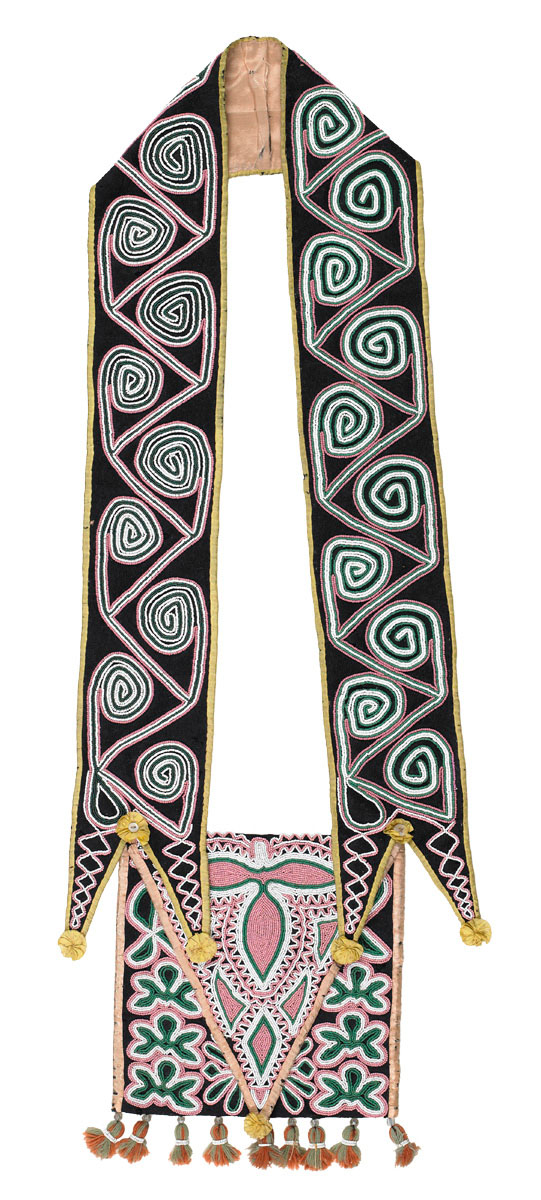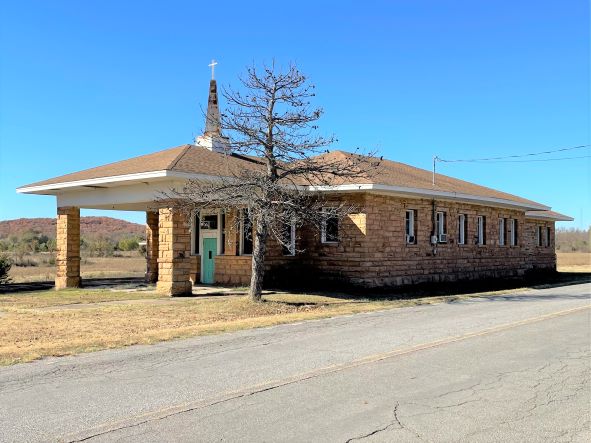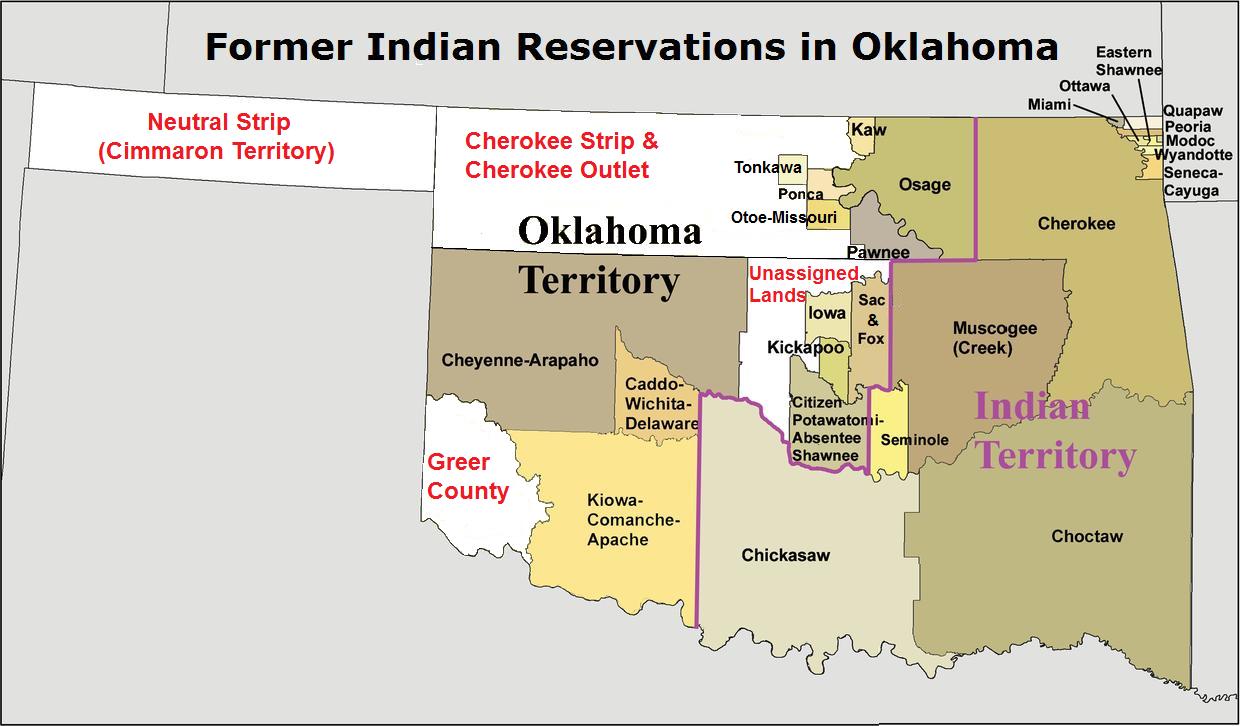|
Nuyaka, Oklahoma
Nuyaka is a populated place in Okmulgee County, Oklahoma, United States. It is approximately south-southwest of Beggs and is west of the city of Okmulgee off SH-56. The Old Nuyaka Cemetery and the Nuyaka Mission site are southwest of town. The elevation is and the coordinates are latitude 35.653 and longitude -96.14. It was notable as the center of traditionalist opposition to the Creek national government during the late 19th century. According to one source, the name Nuyaka is from the Creek pronunciation for New York, which was the site of a meeting between President George Washington and 26 Creek chiefs. The meeting was to discuss a treaty and to obtain a cession of Creek land to the U, S. Government. Reportedly, the Creeks were so impressed with New York City that they named one of their towns in present-day Alabama on the Tallapoosa River for it. The town was abandoned during the Creek War in the fall of 1813 and destroyed by Major General David Adams in December 18 ... [...More Info...] [...Related Items...] OR: [Wikipedia] [Google] [Baidu] |
Okmulgee County, Oklahoma
Okmulgee County is a county in the U.S. state of Oklahoma. As of the 2020 census, the population was 36,706. The county seat is Okmulgee. Located within the Muscogee Nation Reservation, the county was created at statehood in 1907. The name Okmulgee is derived from the Hitchita (Lower Creek) word ''okimulgi'', meaning "boiling waters".Glynnis Coleman. "Okmulgee County" ''Encyclopedia of Oklahoma History and Culture''. Accessed January 4, 2012. Okmulgee County is included in the , OK metropolitan s ... [...More Info...] [...Related Items...] OR: [Wikipedia] [Google] [Baidu] |
Muscogee (Creek) Nation
The Muscogee Nation, or Muscogee (Creek) Nation, is a federally recognized Native American tribe based in the U.S. state of Oklahoma. The nation descends from the historic Muscogee Confederacy, a large group of indigenous peoples of the Southeastern Woodlands. They commonly refer to themselves as Este Mvskokvlke (). Historically, they were often referred to by European Americans as one of the Five Civilized Tribes of the American Southeast.Theodore Isham and Blue Clark"Creek (Mvskoke)" ''Encyclopedia of Oklahoma History and Culture.'' Accessed Dec. 22, 2009 The Muscogee Nation is the largest of the federally recognized Muscogee tribes. The Muskogean-speaking Alabama, Koasati, Hitchiti, and Natchez people are also enrolled in this nation. Algonquian-speaking Shawnee and Yuchi (language isolate) are also enrolled in the Muscogee Nation, although historically, the latter two groups were from different language families and cultures than the Muscogee. Other federally recognize ... [...More Info...] [...Related Items...] OR: [Wikipedia] [Google] [Baidu] |
Muscogee Tribal Towns
The Muscogee, also known as the Mvskoke, Muscogee Creek or just Creek, and the Muscogee Creek Confederacy ( in the Muscogee language; English: ), are a group of related Indigenous peoples of the Southeastern WoodlandsTranscribed documents Sequoyah Research Center and the American Native Press Archives in the . Their historical homelands are in what now comprises southern , much of , western |
Slick, Oklahoma
Slick is a town in Creek County, Oklahoma, United States. The population was 151 at the 2020 census, a 15.3% increase over the population in 2010. History Slick began as an oil boom town in 1920, and was named for oilman Thomas B. Slick, who drilled a discovery well nearby. A railroad, the Oklahoma-Southwestern Railway, was completed into town the same year. By 1922, the town had an estimated population of 2500-3500. However, production of oil began to decline in the latter part of 1923, and the railroad was abandoned by 1930. So when the town appeared for the first time in the U.S. census in 1930, the population was only 422, a figure which declined until 1950 and has since fluctuated. All of its employed citizens commute to work in Bristow, Sapulpa, and Tulsa. Geography Slick is on the Deep Fork River, and situated southeast of Bristow on SH-16. Slick has a public park, located on the west side of SH-16, where Easter Egg Hunts and other events are held. According to ... [...More Info...] [...Related Items...] OR: [Wikipedia] [Google] [Baidu] |
Bristow, Oklahoma
Bristow is a city in Creek County, Oklahoma, Creek County, Oklahoma, United States. The population as of the 2020 United States census, 2020 Census was 4,248, up slightly from the population of 4,222 reported at the 2010 United States Census, 2010 census. History Bristow began in 1898, when the St. Louis–San Francisco Railway ("SL&SF") built a track between Sapulpa, Oklahoma, Sapulpa and Oklahoma City. The town was named for Joseph L. Bristow, an Assistant U.S. Postmaster General who later served as a U.S. senator from Kansas. A post office was established April 25, 1898. By the 1900 census, the population was 626. Bristow was designated as the county seat for Creek County at statehood when its population was 1,134. However, the county held a special election on August 20, 1908, to decide whether the seat would remain in Bristow or move to Sapulpa, which claimed to be more centrally located. Bristow had a larger population and claimed to have better railroad connections. Sapul ... [...More Info...] [...Related Items...] OR: [Wikipedia] [Google] [Baidu] |
Oklahoma-Southwestern Railway
The Oklahoma-Southwestern Railway (“OSR”) ran between Bristow, Oklahoma and Nuyaka, Oklahoma. It operated from 1920 to 1930 before being abandoned. History Incorporated January 12, 1920 by legendary Oklahoma oilman Thomas Baker Slick Sr., T.B. Slick, the OSR was intended to service Oklahoma oilfields, and was originally projected to run about 50 miles from Bristow to Okmulgee, Oklahoma, Okmulgee, then an active refining center. Starting from a connection with the St. Louis-San Francisco Railway at Bristow and heading generally southeast, the line was built in 1920 through the Bristow oil field to Slick, Oklahoma, about 12 miles, where a large depot was constructed to handle the crowds that flocked to Slick to "get rich from the gushing black gold." The line terminated in Nuyaka, Oklahoma in 1921, about another 11.9 miles, never reaching Okmulgee. The railroad also built two spurs northerly from the mainline, the Rock Creek spur extending into the Conoco, Continental oil fie ... [...More Info...] [...Related Items...] OR: [Wikipedia] [Google] [Baidu] |
Isparhecher
Isparhecher (c. 1829 - December 22, 1902, Muscogee), sometimes spelled "Isparhecker," and also known as ''Is-pa-he-che'' and ''Spa-he-cha'', was known as a political leader of the opposition in the Creek Nation (now known by their autonym Muscogee) in the post-Civil War era. He led a group that supported traditional ways and was opposed to the assimilation encouraged by Chief Samuel Checote and others. Born in Alabama in 1829 to full-blood Creek parents, Isparhecher and his family belonged to the Lower Creek (a.k.a., McIntosh faction), who wanted to keep traditional ways. They were among the majority of Creek who removed to Indian Territory in the early 1830s. They settled on a farm at Cussetah town, about southeast of the present city of Okmulgee, OklahomaJohn Bartlett Meserve. ''Chronicles of Oklahoma''. Vol. 10, No. 1, March 1932. "Chief Isparhecher." Retrieved April 24, 201 After most of the Creek Nation allied with the Confederacy at the outbreak of the American Civil War, ... [...More Info...] [...Related Items...] OR: [Wikipedia] [Google] [Baidu] |
Lochar Harjo
Lochar may refer to: * Lochar (ward) Lochar is one of the thirteen wards used to elect members of the Dumfries and Galloway Council. It elects four Councillors. Councillors Election results 2022 election 2017 election 2017 Dumfries and Galloway Council election 2 ..., Dumfries and Galloway, Scotland * Lochar Moss Torc, an Iron Age brass torc * Lochar Thistle F.C., Dumfries, Scotland * Lochar Water, a stream in Dumfries and Galloway See also * Locher (other) {{disambig ... [...More Info...] [...Related Items...] OR: [Wikipedia] [Google] [Baidu] |
Samuel Checote
Samuel Checote (1819–1884) (Muscogee) was a political leader, military veteran, and a Methodist preacher in the Creek Nation, Indian Territory. He served two terms as the first principal chief of the tribe to be elected under their new constitution created after the American Civil War. He had to deal with continuing tensions among his people, as traditionalists opposed assimilation to European-American ways. Checote fought with the Confederacy during the war; most Creek supported their cause. He served as a lieutenant colonel with a Creek mounted unit in Indian Territory. After the war he resumed preaching. Early life and education Checote was born in 1819 to a Muscogee family in the Chattahoochee Valley, traditional Creek territory. It is in present-day eastern Alabama, near the Georgia state line. He started school at the Asbury Manual Labor School, established by Methodist missionaries near Fort Mitchell, Alabama. In 1829, he and his family were forced to move to Indian Te ... [...More Info...] [...Related Items...] OR: [Wikipedia] [Google] [Baidu] |
Indian Territory
Indian Territory and the Indian Territories are terms that generally described an evolving land area set aside by the Federal government of the United States, United States government for the relocation of Native Americans in the United States, Native Americans who held aboriginal title, original Indian title to their land as an independent nation. The concept of an Indian territory was an outcome of the U.S. federal government's 18th- and 19th-century policy of Indian removal. After the Indian Territory in the American Civil War, American Civil War (1861–1865), the policy of the U.S. government was one of Cultural assimilation of Native Americans#Americanization and assimilation (1857–1920), assimilation. Indian Territory later came to refer to an Territories of the United States#Formerly unorganized territories, unorganized territory whose general borders were initially set by the Nonintercourse Act of 1834, and was the successor to the remainder of the Missouri Territory a ... [...More Info...] [...Related Items...] OR: [Wikipedia] [Google] [Baidu] |
Horseshoe Bend National Military Park
Horseshoe Bend National Military Park is a 2,040-acre, U.S. national military park managed by the National Park Service that is the site of the penultimate battle of the Creek War on March 27, 1814. The military park is located in Tallapoosa County, Alabama. Although New Site is the closest municipality, the park uses a mailing address based in Daviston. General Andrew Jackson's Tennessee militia, aided by the 39th U.S. Infantry Regiment and Cherokee and Lower Creek allies, won a decisive victory against the Upper Creek Red Stick Nation during the Battle of Horseshoe Bend at this site on the Tallapoosa River. Jackson's decisive victory at Horseshoe Bend broke the power of the Creek Nation. Over 800 Upper Creeks died defending their homeland. This was the largest loss of life for Native Americans in a single battle in the history of United States. On August 9, 1814, the Creeks signed the Treaty of Fort Jackson, which ceded 23 million acres (93,000 km2) of land in ... [...More Info...] [...Related Items...] OR: [Wikipedia] [Google] [Baidu] |
Oklahoma
Oklahoma ( ; Choctaw language, Choctaw: , ) is a landlocked U.S. state, state in the South Central United States, South Central region of the United States. It borders Texas to the south and west, Kansas to the north, Missouri to the northeast, Arkansas to the east, New Mexico to the west, and Colorado to the northwest. Partially in the western extreme of the Upland South, it is the List of U.S. states and territories by area, 20th-most extensive and the List of U.S. states and territories by population, 28th-most populous of the 50 United States. Its residents are known as Oklahomans and its capital and largest city is Oklahoma City. The state's name is derived from the Choctaw language, Choctaw words , 'people' and , which translates as 'red'. Oklahoma is also known informally by its List of U.S. state and territory nicknames, nickname, "The Sooner State", in reference to the Sooners, American pioneer, American settlers who staked their claims in formerly American Indian-o ... [...More Info...] [...Related Items...] OR: [Wikipedia] [Google] [Baidu] |



